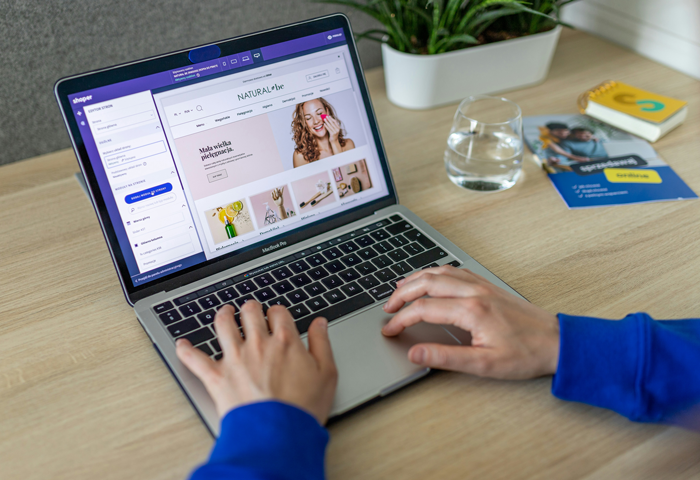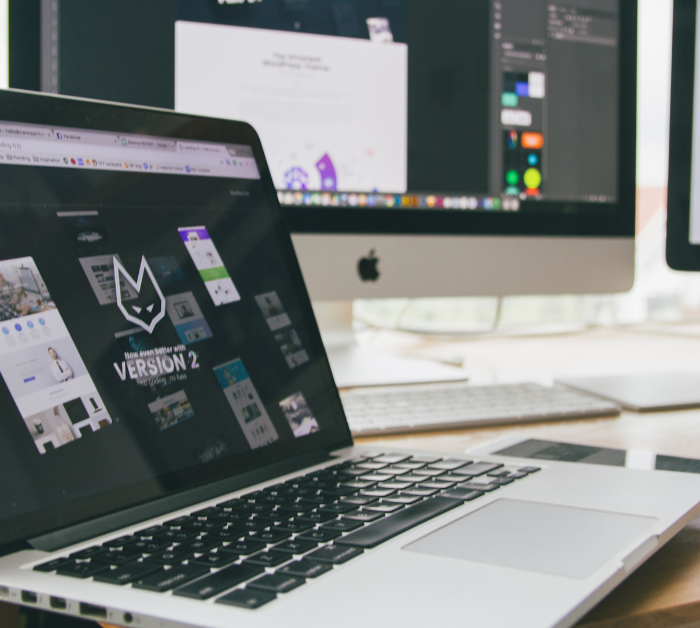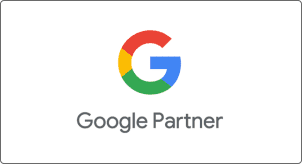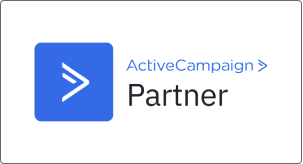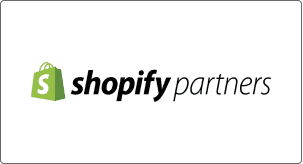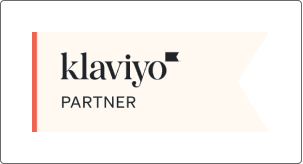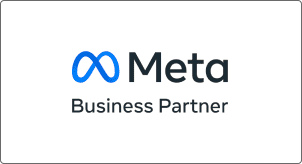In marketing, knowing your audience is critical. B2B (Business-to-Business) and B2C (Business-to-Consumer) advertising serve different purposes, use different strategies, and target different buyers. While both aim to increase sales and brand visibility, the way they do it varies significantly. Overlooking these differences can lead to wasted resources and missed opportunities.
So, what separates B2B from B2C advertising—and why does it matter? Let’s break it down.
What Is B2B vs. B2C Advertising?
- B2B Advertising refers to marketing efforts aimed at other businesses. The products or services advertised are often technical or service-based solutions that help businesses operate more efficiently, reduce costs, or grow revenue.
- B2C Advertising, by contrast, targets individual consumers. The aim here is often more emotive – sparking a need or desire that drives a quick purchasing decision.
The difference might sound simple on the surface, but the implications run deep. Let’s break down the major contrasts.
1. Target Audience & Purchase Motivation
B2B marketing deals with professionals making purchasing decisions on behalf of their company. These buyers are focused on value, ROI, and efficiency. Their buying cycle tends to be longer and more rational.
B2C buyers are typically individuals making decisions for themselves or their families. They are driven by emotion, convenience, price, and brand loyalty. Their purchasing behaviour is often impulsive or needs-based.
Example:
- A B2B buyer might spend three months evaluating a new CRM system.
- A B2C buyer might spend five minutes deciding which brand of moisturiser to purchase.
2. Decision-Making Process
B2B purchases usually involve multiple stakeholders. For example, an IT manager may need approval from the CFO and CEO before proceeding with a software solution.
In contrast, most B2C decisions are made individually, without the need for internal consensus.
According to Gartner, the average B2B buying group consists of 6 to 10 decision-makers, each armed with 4 to 5 pieces of information they’ve gathered independently.
3. Length and Complexity of the Sales Cycle
- B2B sales cycles are typically longer. Products and services often require demos, trials, detailed consultations, and negotiation.
- B2C sales cycles are much shorter – sometimes mere minutes.
According to HubSpot, the average B2B sales cycle can range from one to six months, while many B2C purchases are completed within days.
4. Tone and Messaging
B2B messaging is logical, data-driven, and informative. It focuses on building trust and demonstrating how a product solves a business problem.
B2C messaging is more emotionally driven, using storytelling, lifestyle imagery, and aspirational messaging to create desire or urgency.
Example:
- B2B: “Increase productivity by 40% with our cloud-based platform.”
- B2C: “Make every moment magical with our new fragrance.”
5. Marketing Channels Used
Different platforms work better depending on the audience:
|
Channel |
B2B Effectiveness |
B2C Effectiveness |
|
|
✅ High |
❌ Low |
|
Email Marketing |
✅ High |
✅ Medium |
|
Google Search Ads |
✅ High |
✅ High |
|
TikTok |
❌ Low |
✅ High |
|
Trade Publications |
✅ High |
❌ Low |
|
|
❌ Low |
✅ High |
According to LinkedIn, 89% of B2B marketers use their platform for lead generation, making it the top-performing B2B platform. Meanwhile, 76% of B2C marketers say that platforms like Instagram and Facebook are most effective for building brand awareness.
6. Type of Content
B2B content tends to be longer-form and research-heavy, such as:
- White papers
- eBooks
- Webinars
- Case studies
- Industry reports
B2C content is generally shorter and designed for quick consumption:
- Social media videos
- Influencer posts
- Testimonials
- Product demos
- Blog articles
In a 2023 Content Marketing Institute survey, 78% of B2B marketers said that educating the audience was their top goal, while B2C marketers prioritised content that built emotional connection.
7. Brand Loyalty vs. Relationship Building
B2C marketing often tries to build brand loyalty, usually through emotion and repeat customer engagement.
B2B marketing focuses more on relationship building, sometimes requiring months (or years) of nurturing through account-based marketing, regular contact, and customer success initiatives.
8 Critical Differences Between B2B and B2C Advertising
|
Feature |
B2B Advertising |
B2C Advertising |
|
Target Audience |
Businesses and professionals within those organisations (e.g., CEOs, procurement managers, IT directors). |
Individual consumers. |
|
Decision-Making |
Rational, based on ROI, efficiency gains, and strategic alignment. Often involves multiple stakeholders. |
Emotional, often impulsive. Influenced by personal needs, wants, and desires. |
|
Sales Cycle |
Long and considered. Can take weeks, months, or even years to nurture a lead and close a deal. |
Short and sweet. Driven by immediate needs or desires. |
|
Messaging/Tone |
Professional, informative. Focuses on tangible benefits like increased efficiency, cost savings, and improved productivity. Case studies and testimonials are crucial. |
Emotional appeals. Focuses on benefits like personal satisfaction, convenience, status, or enjoyment. Humour, nostalgia, and aspiration are common tools. |
|
Channels |
Industry-specific publications, trade shows, webinars, email marketing campaigns targeted at specific roles, LinkedIn, content marketing (blog posts, e-books). |
Mass-market channels like television, radio, social media platforms (Instagram, TikTok, Facebook), online marketplaces. |
|
Relationship |
Building trust and long-term relationships is paramount. Focus on providing value and expertise. |
Focus on creating memorable experiences and driving immediate purchases. |
|
Risk |
Higher risk for the buyer. Decisions impact the entire organisation. |
Lower risk for the buyer. Decisions primarily impact the individual. |
|
Value |
Focus on delivering long-term value and building strategic partnerships. |
Focus on delivering immediate gratification and meeting personal needs. |
Why It Matters to Get This Right
Using the wrong advertising strategy for your audience can lead to:
- Mismatched messaging that doesn’t resonate
- Poor conversion rates
- Misallocated ad spend
- Lower customer satisfaction
For example, a B2B company running emotional, high-cost TV ads is unlikely to reach key decision-makers. Likewise, a B2C brand using technical white papers won’t hold the attention of everyday consumers. Understanding the difference between B2B and B2C advertising helps businesses create campaigns that actually work.
The Blurring Lines: B2B2C and Hybrid Models
Interestingly, the lines between B2B and B2C are starting to blur. Many companies now operate in a B2B2C model—selling to businesses that then sell to consumers. For example, a skincare manufacturer might sell to salons (B2B) that then sell to end-users (B2C).
Moreover, consumer expectations are influencing B2B marketing. Business buyers now expect the same seamless, personalised experiences they get as consumers. This has led to a rise in account-based marketing (ABM) and AI-driven personalisation in B2B.
Final Thoughts
Whether you’re a SaaS provider targeting SMEs or launching an eco-conscious skincare line, your advertising strategy must align with your audience. B2B and B2C campaigns require different approaches—because CEOs and teenage trendsetters don’t respond to the same messages.
Understanding these differences leads to smarter strategies, stronger engagement, and ultimately, higher returns.
Avoid the pitfall of generic advertising. Instead, tailor your campaigns to the behaviours, motivations, and decision-making processes of your ideal customer.
At 3 Phase Marketing, we specialise in building data-driven, audience-specific advertising strategies that deliver results. Our team knows what it takes to succeed in both B2B and B2C spaces—and we’ve helped hundreds of Australian businesses grow with campaigns that actually convert.
Let’s build your next high-performing campaign. Book your free strategy session with 3 Phase Marketing today.
Frequently Asked Questions (FAQs)
- What is a B2B advertising agency and how is it different from a B2C agency?
A B2B advertising agency specialises in creating marketing strategies that target other businesses rather than individual consumers. Unlike B2C agencies that focus on emotional, fast-paced consumer decisions, a B2B advertising agency prioritises long-term value, ROI, and rational decision-making processes that involve multiple stakeholders.
- Why should I hire a B2B advertising agency in Australia instead of doing it in-house?
A B2B advertising agency in Australia brings local market expertise, access to advanced tools, and deep knowledge of business buying behaviour. In-house teams often lack the time or specialised experience needed to run strategic, multi-touch campaigns that convert leads over longer sales cycles.
- What industries benefit most from working with a B2B advertising agency?
Industries such as technology, professional services, manufacturing, finance, and SaaS see strong results when partnering with a B2B advertising agency. These sectors typically have longer sales cycles, complex decision-making structures, and a need for highly targeted, ROI-driven marketing strategies.
- Which platforms do B2B advertising agencies in Australia use most?
Top platforms include LinkedIn, Google Ads, industry-specific publications, email marketing tools, and content marketing hubs. A B2B advertising agency in Australia will often prioritise LinkedIn due to its strong performance for lead generation among professional audiences.
- What should I look for in a B2B advertising agency in Australia?
Look for an agency with proven results in your industry, a strong understanding of the local market, and a clear approach to ROI tracking. Case studies, client testimonials, and a consultative approach are also key indicators of a high-performing B2B advertising agency.
